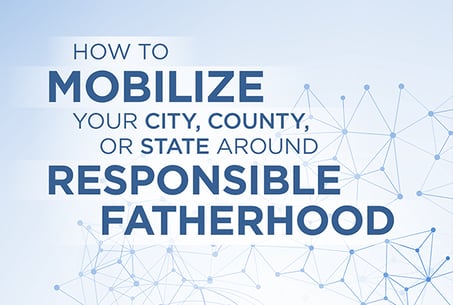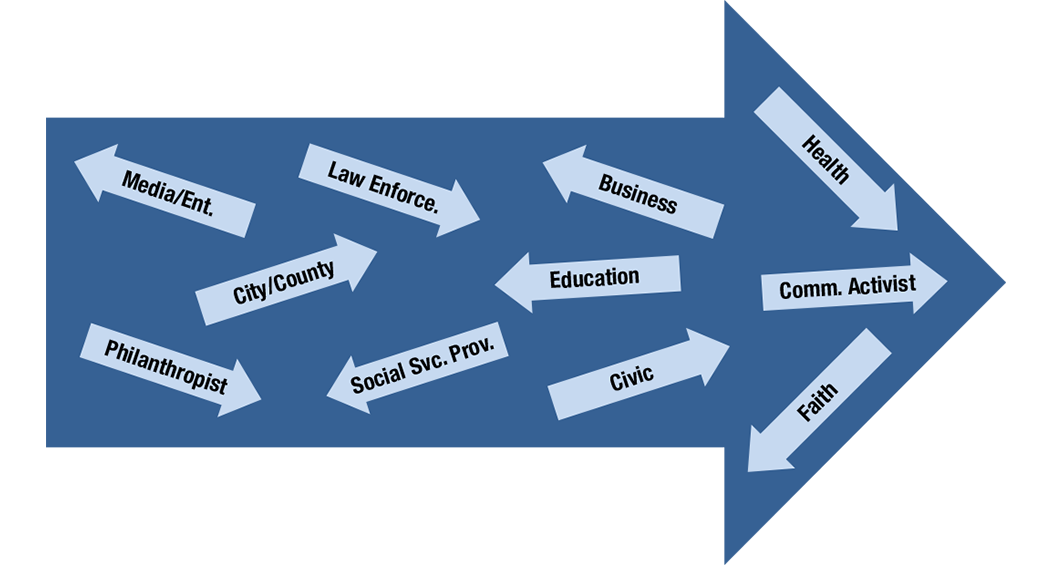Free eBook > The Secret Formula to Mobilize Your Community Around Fatherhood
4 min read
Date Published: 11/12/2019
Last Updated: 11/13/2019
National Fatherhood Initiative Blog / Latest Articles
4 min read

Can you see it clearly?
That is, your vision for fathers and families in your community in the coming year? After all, next year is 2020…
I know, bad joke. Actually, it’s kind of a “dad joke”. But I digress…
On a more serious note, having a vision for your organization around fatherhood in the coming year is a noble effort. It helps you to create goals and a plan to accomplish great things for fathers and families.
Maybe you want to start a new group-based program for dads. Or maybe you want to connect with more fathers in your community to bring them the services they need. Or perhaps your vision is to rally your community around fatherhood.
But wait – that last one sounds like a huge task. How exactly would you even begin a community project like that?
Lucky for you, National Fatherhood Initiative® has been mobilizing communities around responsible fatherhood for years using a method called “The Community Mobilization Approach” (CMA). We recently compiled our “secret formula” on conducting the CMA into an updated ebook that you can use to run your own Community Mobilization Approach around fatherhood!
Now, you might be wondering why we’re giving you all of our “secrets”. It’s because our mission is to equip organizations and communities to intentionally engage fathers in their children’s lives. We can’t do it alone. We need your help in communities across the nation.
So, what is exactly the CMA you ask? Sounds pretty fancy…
The CMA is simply a method that provides the framework to help you effectively manage a community wide collaboration, making it possible for you to create a compelling and obtainable vision for mobilizing around fatherhood.
Check out the image below. The small arrows in the illustration below show how every sector in your community has its own direction and priorities, which makes mobilizing around any issue, let alone fatherhood, complex. The large arrow represents how the CMA gathers, in a cohesive and coordinated manner, leaders in community sectors and moves them in the same direction for the good of the community even while they continue to pursue their unique directions and priorities.

Wow. That sounds intriguing. But why should I go this “big” with something for fathers?
Because father absence is a cancer that affects every aspect of your community’s health and causes poor outcomes for children in the areas of: educational attainment, mental health, relationship formation and stability, and labor force success1. So, the old adage, “correlation does not imply causation” does not apply to the effects of father absence on children.
If you want to reverse the trend of father absence, your community must take ownership of a larger vision for fatherhood—not just one organization to carry the load. The best way for this vision to happen is to allow the community to shape it. Together.
That is why it is so important to have local people create solutions and inspire local sectors to act within their spheres of influence. These are the people and sectors in direct contact with and can exert influence with fathers and families.
Now this isn’t to say we haven’t seen an increase in the number of father-specific programs serving communities across the country. The fact remains that many of those programs struggle to recruit and retain fathers. They also find it difficult to sustain their fatherhood programs and effectively evaluate the impact their programs have on fathers and families. These programs struggle because there are larger societal norms at play that effect a fathers’ motivation to seek and use the resources available to them.
Societal norms include not only messages fathers receive from social service agencies, but also from the media, business, and law enforcement sectors on what it means to be a man and a father. Unfortunately, these are the very sectors in communities that are marginally involved in promoting responsible fatherhood if they’re involved at all.
To promote involved, responsible, and committed fatherhood, communities must do more than expand programs and services to include fathers and create new programs for dads. Communities must change the cultural institutions that form the different sectors of society. Comprehensive initiatives include change at the individual and environmental levels. The CMA can help you accomplish this very thing in your community.
Ready to learn how to do it?
We’ve outlined all of the steps, including who needs to be involved, in our newly updated Community Mobilization Approach ebook.
This guide provides you with an overview of National Fatherhood Initiative®’s (NFI) Community Mobilization Approach™ (CMA) and examples of how communities have used it to create responsible fatherhood initiatives that engage every sector of community life.
It also provides background information on the CMA, the importance of establishing a lead agency for the process, a brief overview of the three CMA phases, and an appendix that includes specific examples of what communities have accomplished as a result of the CMA.
Our hope is that by learning about it, and seeing examples of other communities’ accomplishments, you will be inspired to mobilize your community.
Thank you for partnering with National Fatherhood Initiative® to bring the importance of responsible fatherhood to light in your community.
Don’t delay, download the ebook today!
1 McLanahan, S., Tach, L., & Schneider, D. (2013). The causal effects of father absence. Annual Review of Sociology, 39:399-427.
Date Published: 11/12/2019
Last Updated: 11/13/2019
Download the ebook to learn how to create fatherhood initiatives that engage every sector of community life.

Train Your Staff
Fatherhood Programs
Fatherhood Data
© 2025 National Fatherhood Initiative®. All rights reserved.